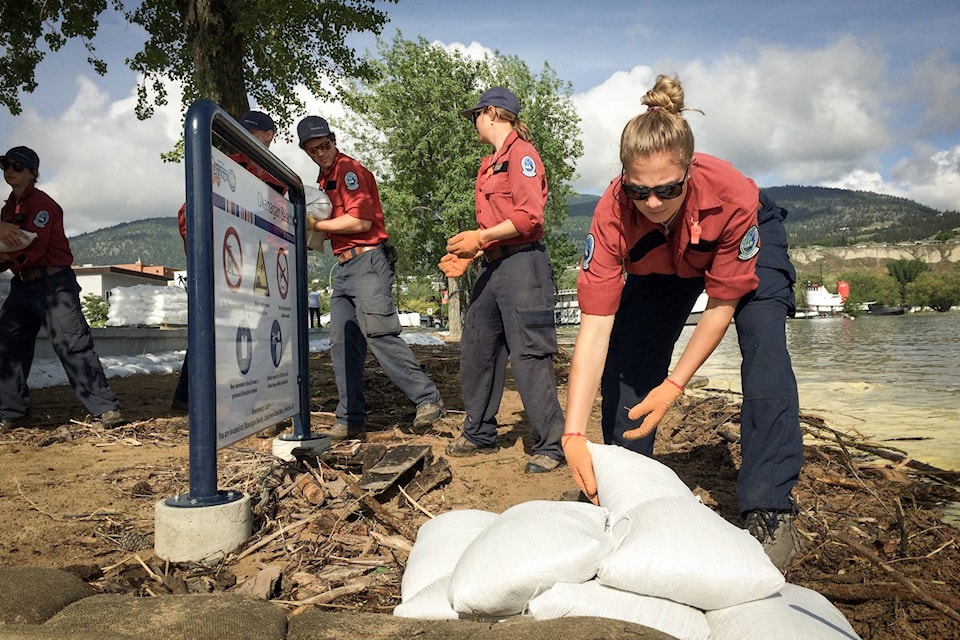Along with damage caused by weeks of high water in lakes and rivers, receding waters are going leave behind some other cleanup problems.
In Penticton alone, more than 75,000 sandbags have been distributed over the last couple of weeks to protect beaches and other low-lying areas. Once the crisis is over, those will have to be collected.
“We get funding to put them down but we don’t to pick them up,” said Penticton CAO Peter Weeber. Throughout the crisis, the province has covered a lot of the extraordinary costs, including the sand and sandbags.
But when all is done, picking them up again is the responsibility of the local authorities. Just cutting the bags open and dumping the sand on the beaches isn’t an option.
“We aren’t allowed to dump it in certain areas because it’s not local sand,” said Weeber, explaining that there would be a risk of contaminating the local ecosystem with foreign seeds and other material.
“You don’t want to be dumping foreign dirt on the beaches,” said Weeber.
One possibility, though it might seem redundant, is the city will create a pit to dump the sand in.
“We may very well dig holes in certain areas and just dump our sand in there and bury it,” said Weeber. “That was one of the plans discussed.”
The sandbags, especially the burlap ones, won’t last long enough to be stockpiled in case of future emergencies.
Weeber said the sandbag question is part of a bigger issue around emergency response operations.
“We tend to do a lot of work in a very short amount of time and usually with full support from the province and funding. Then everybody walks away,” said Weeber, adding that there is funding for certain items during the recovery period, though not moving sandbags.
“We don’t get 100 per cent funding for it. We may get some support but typically we’re on the hook,” said Weeber. Local authorities have a list of eligible and ineligible expenses, and items that could be considered regular city maintenance or infrastructure repair, like the damage to Kiwanis Walking Pier or concrete blocks the city placed to prevent undermining of key structures aren’t usually on the eligible side.
“That is regular city maintenance, not considered an emergency. So we are actually putting our money out here,” said Weeber, estimating the cost of installing the concrete blocks at $6,000. “The city is expected to maintain their own infrastructure to some extent but emergency works are covered.”



